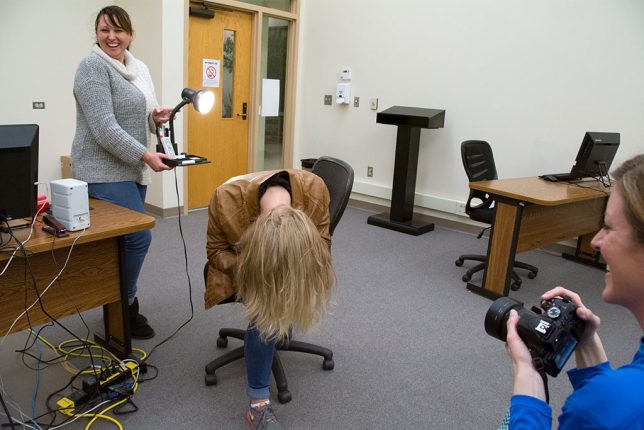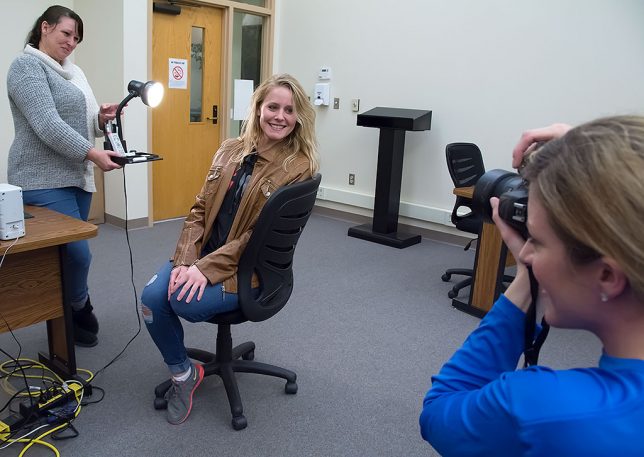Here are some images that I generated over the past few months around the house and the patch of Oklahoma where I live.
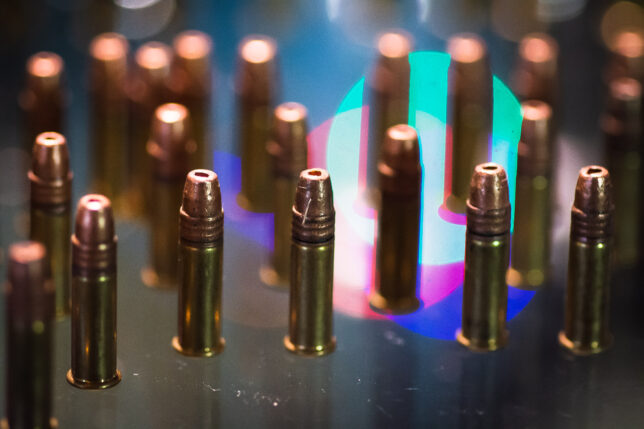

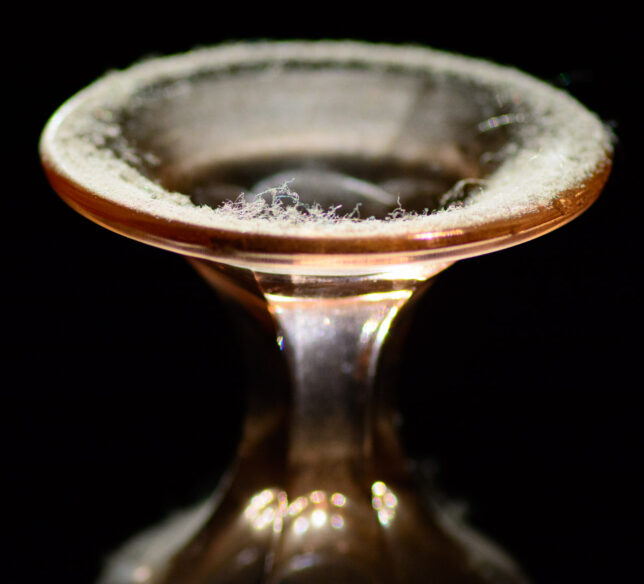


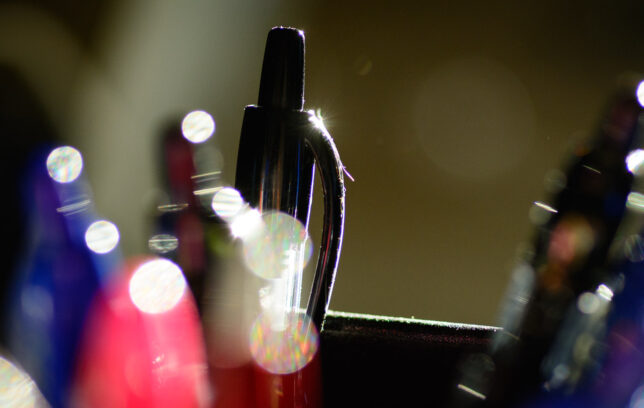


Here are some images that I generated over the past few months around the house and the patch of Oklahoma where I live.









As anyone and everyone knows, most pictures viewed by human beings every day are viewed on screens of one kind or another. Important exceptions are, of course, my own newspaper, which is always better viewed in print, and many more visually-oriented publications.
It’s fun to share images on social media or, preferably, here on my own website, but without a doubt, when I have an image that I really love, a nice big print of it can really bring it to life.
For a long time, I had a very nice large-format printer, and printed quite a few images, but it died a couple of years ago, so I switched to ordering prints online, which, though they lack to immediacy and quality-control of in-house printing, are actually very good, and, when you consider the cost of inkjet ink, quite a lot cheaper.

Recently, my printer of choice for paper prints, and items like calendars and books, has been shutterfly.com.
While looking over prints to hang on my walls at home, I remembered a product that was all the rage when it came out in the early 1980s: Kodak Elite Fine-Art Paper. It was a wonderful product, and delivered on its promise of super-rich tonal qualities on an extra-luxurious fiber-based paper. But like all great things from Kodak, it is just a memory, and, at least on the web, not a well-preserved memory. My photographer friends in college tried it, but it was so expensive that we could only buy a few sheets at a time. As far as I know, I don’t have any images in my collection made with this product.
If you have an image or three that you really love, consider having it printed really big, frame it, and display it in your home or workplace. Or if you are not a photographer, consider purchasing art from a local vendor at something like an arts festival, gathering place, or even on the street, then display it. I promise it will mean so much more than something you flashed past on your phone.


A fellow photographer and I got into a very interesting discussion recently as I was walking my dogs.
I have a lot of interesting discussions while walking my dogs, since I can put in my ear buds and slip my phone into my back pocket, then talk through stuff as the Wolfhound and the Chihuahua take their turns around the patch.
The discussion was about the ultimate disposition of our creative work, especially photographs, for both of us, but also my writing. What will become of it all after we are gone?
I told my friend that my first box to check in preserving my vision was to get as many images as I could printed in the newspaper. That was an easy one for me to check off and continue to check off as my newspaper and I thrive.
He said that he had thought about archiving all of his photographs digitally and blasting them into space, to be found ten trillion years later by the Blargons.

Then we sort of settled into the idea that some photographers have made themselves extendedly remembered (though not “immortalized” and all that word entails) by creating large, archival prints of their photographs and selling them throughout the world. The great Ansel Adams comes to mind. You can go to Washington D.C. or Moscow or Santa Fe and to see his work, in a form that will last for many years, real, tangible silver photographic prints.
Yet even those will someday be dust.
Also, what photographs are the most significant? Nature and landscape? Portraits? “Fine Art”? News and sports?
As we spoke, he spotted a sunset shot and hung up to make a picture.
Thus, is that the real art and value of the creative things we do? The process? Is our work in writing, photography, sculpting, music, painting, teaching, film making, acting … really just building sand castles?
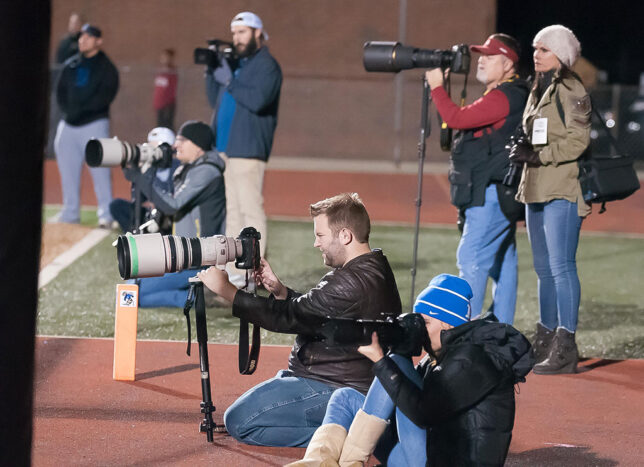


Fellow journalist Ashlynd Huffman texted me recently asking how to create a silhouette. It occurred to me that it would be worth it to have my own tutorial about it.
Silhouettes are essentially lithographs, and are usually created with a bright background that is correctly exposed, with something underlit or unlit in the foreground that forms a shape without having much detail.
Most of my silhouettes are happy circumstances of natural light, but it doesn’t take a lot to construct one. Throw some light on a background, and leave your foreground figure in the shadows.
If you are shooting in manual exposure mode, move up and down the exposure scale until you get the background about right, and the foreground item, person, or figure, very dark or black.
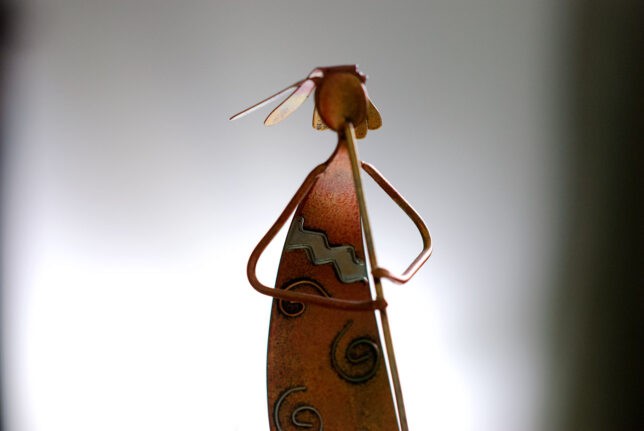
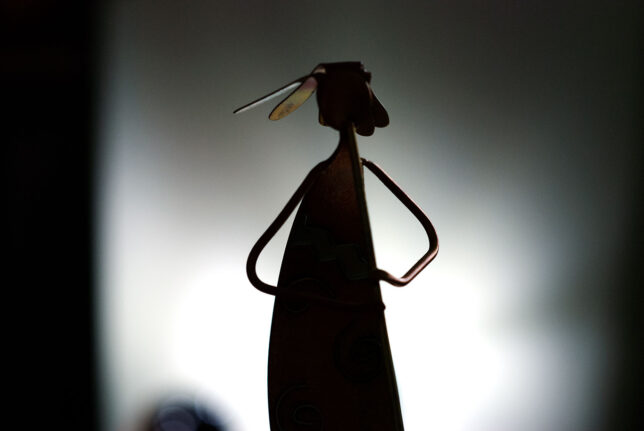
If you are shooting in an automatic exposure mode like Program, Shutter Priority, or Aperture Priority, use exposure compensation aggressively to get the look you want. Green Box Mode usually won’t let you control your exposure.
If you are shooting film, bracket: shoot a series of frames at widely different exposure settings.
Silhouettes imply shape and anonymity.
Silhouettes should never take the place of strong narrative, but if used correctly, can contribute to a strong narrative.


On my work laptop, I use recent images from my news, sports, and feature photos as my screen saver.
[stextbox id=’info’ caption=’My Screen Needs to Be Saved?’]For you 21st century people who have no idea what a screen saver is, basically it is part of the operating system of a desktop or a laptop computer that activates when the computer is unused, dimming the screen, showing the time and date, making patterns, or, in this case, showing me a slide show of all the photos in my screen saver folder.[/stextbox]
The images scroll past, showing years of events I’ve covered, some of it grim, some of it boring, but most of it was absolutely rippingly fun to cover. I hope I never took those events for granted, and I hope we can return to them one day soon.

In the middle of this, it occurred to me that one of my very favorite things to cover , graduations, won’t be happening at all this spring because of the coronavirus crisis. Nor will proms, spring festivals, sports playoffs, water seminars, pancake frys, quilt shows, wagon rides, land run reenactments, groundbreakings, dedications, food festivals, car shows, arts festivals, parades. Life has ground to a halt.

Neither my wife nor I, nor anyone close to us, is sick, and I am grateful for that, for every day, for every breath.
I just posted a few images here, but there are literally thousands in my files that have stories to tell. I want to keep telling these stories.

I shot this on my way to work this morning, fortuitous that my first assignment required a different route to work than I usually take. I jumped out of my car and half-ran across a mostly-empty four-lane highway to get into position.
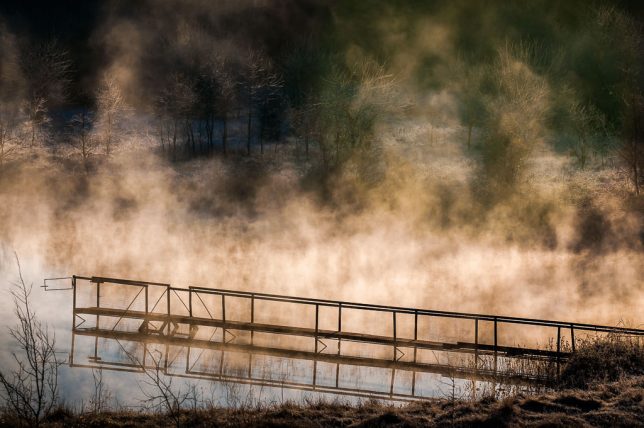
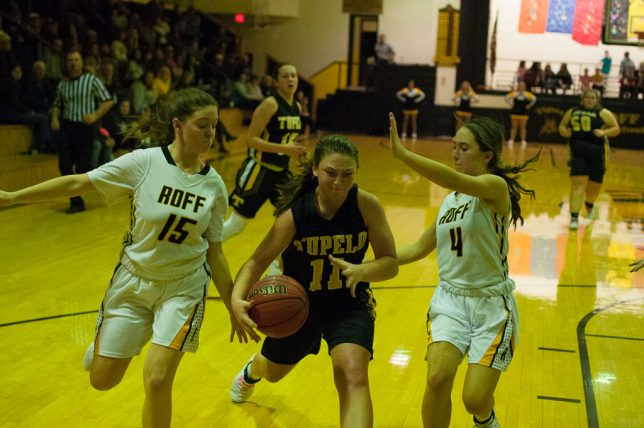
Basketball season is in its peak, and my newspaper and I cover a lot of games. We have a great sports scene in our area, competitive and exciting.
I wondered as I was photographing one of those games last week, a tournament-heavy week with lots of games, how many photographers face the same thing I do all the time: overwhelming color casts in certain gyms.

In fact, there were at least six other photographers in last week’s mix: Steve Sisney, Josh Clough, Jeannie Neal, Courtney Morehead, Glen Bryan, and Lonny Dorman. I am always glad to see them.
The lighting problem comes from a combination of lights that are designed to be efficient (instead of color-neutral), and floor and ceiling colors that create a sort of color feedback loop. For example, several of the gyms I photograph have yellow school colors, painted on courts that are finished in yellowing varnish, reflected by yellowing ceiling tiles.
These are nice places to work, and I love the opportunity to work at these schools, but the color balance in my photographs requires some very aggressive correction. How do I do this?
I see other people’s image from some of these places, and they all exhibit a common thread: difficult color balance. Take it from me: raw files plus aggressive editing can fix these problems, and result in very satisfying images.



A long-time-ago photography student, Royce Gideon, invited me to judge a photography show at Artists of the Arbuckles Art Gallery in Sulphur, Oklahoma. I had no idea what to expect since photography is consistently inconsistent, but I had high hopes.
I drove down Thursday morning and had a look, and found myself in the midst of a some fairly amazing work. (I won’t show their work up close or say who won, since they are not my images. If you want to see them, go to Sulphur. It’s a nice little town.)
The judging process was pretty straightforward, as the staff made notes and placed the ribbons on the pieces for me. I discussed the merits of each winner and they took that down as well.
A reporter from the Sulphur Times-Democrat interviewed and photographed me.
One significant observation: more and more photographers are getting their prints on metallic steel about the thickness of a license plate. It makes for a handsome presentation.
Overall, I was impressed with the work and glad I could participate.

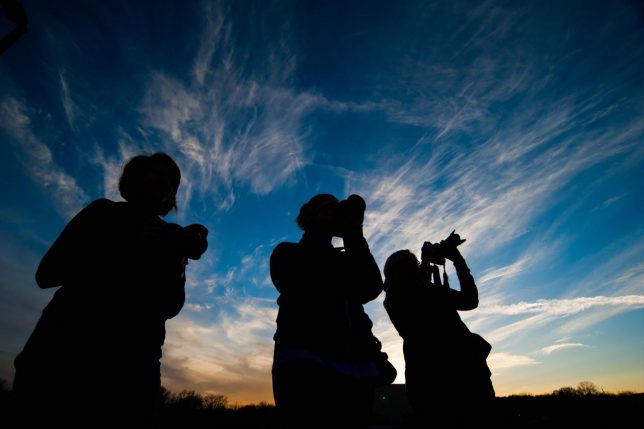

As the years have passed, I find that there are few things I love as much as teaching photography.
It’s fun and interesting, and, like last night, full of “ah ha!” moments for all involved.
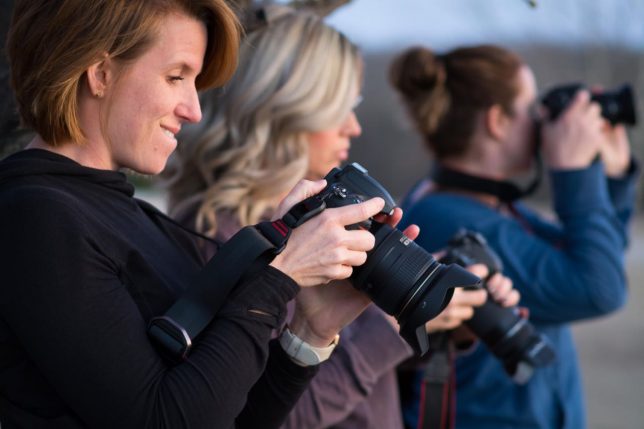

Last night we had a great golden hour, followed by an even better blue hour, followed by a fun indoor existing-light session.
We then finished the night with some after-dark light painting with flash and flashlights.
We all had so much fun we actually ran ten minutes long.
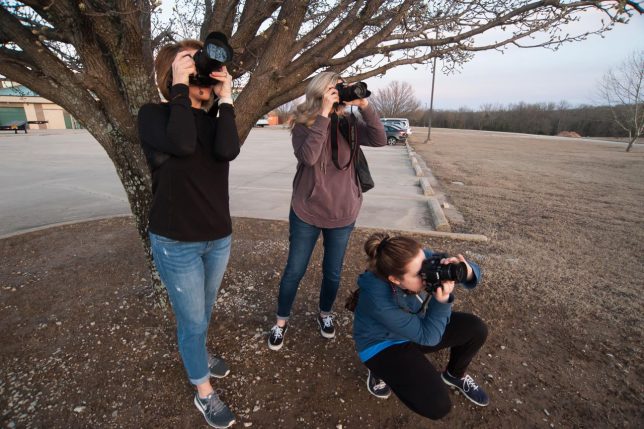

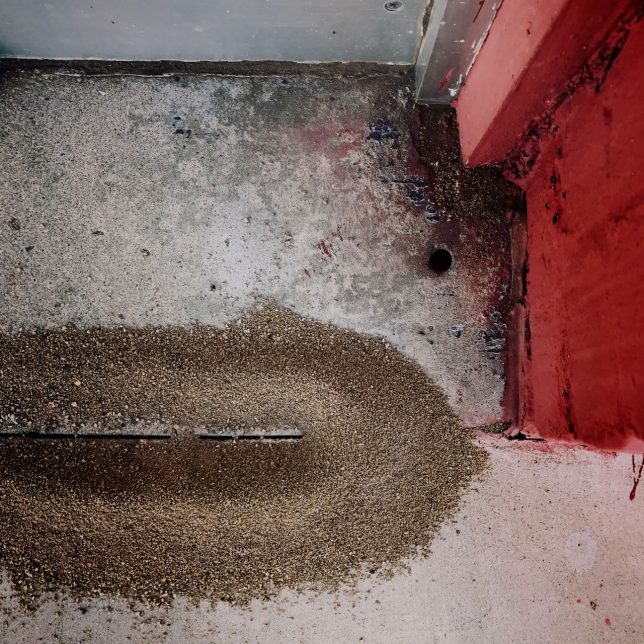

As consumers and the camera industry are well aware, the most common type of photography in the world today is smartphone photography, and the most popular smartphone is the iPhone. My wife Abby and I have iPhones, and their sophisticated, convenient, built-in cameras have all but silenced our point-and-shoot cameras.
As I explore the most recent iteration of these, the iPhone 7 Plus, I am finding both its virtues and its flaws.
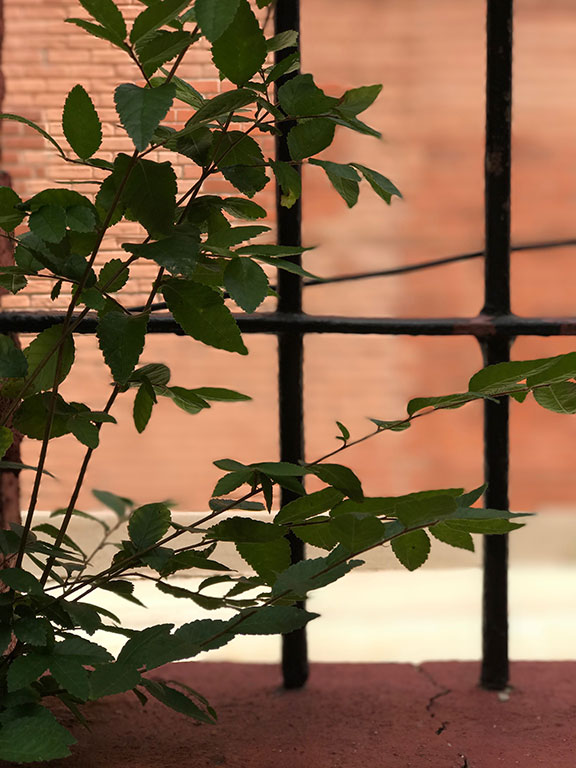
My favorite way to use my iPhone to make pictures is through Instagram, which includes interesting filter looks and makes sharing on social media easy. Instagram’s game changer for me, though, is its square format. It leads to me to compose images differently, since more of my photography involves choose between vertical and horizontal compositions.

Some ideas that might up your phonetography game…
All of the basic rules of photography apply to the phonetography. Keeping that in mind, the camera in your phone is another great tool in the photography toolbox.


On a couple of occasions before, I have described how much fun I have covering Ada’s Independence Day celebrations in historic Wintersmith Park. Our community goes all-out, starting with the Fireball Classic half-marathon, 10k, and 5k races (this year was the 50th), followed by kids games, then grown-up games, then fireworks at dark over Wintersmith Lake.

Having shot this event year after year has been more than a pleasure, it’s been a privilege to offer my view of this historic family-friendly piece of Americana.
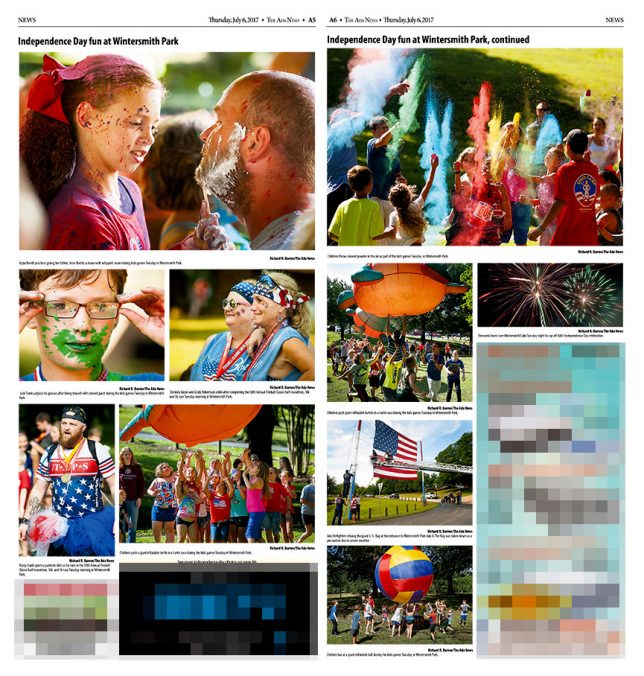


For the first 16 years of my career as a photojournalist, starting with my first newspaper internship in Lawton, Oklahoma, in 1982, my craft was entirely mechanical and analog. I made pictures exclusively on photographic film, and printed them on photographic paper using a darkroom, an enlarger, and processing chemistry of various kinds.
A dominant part of this process for the newspaper industry was the Kodak Ektamatic print processor. Designed to be a very quick way to make prints, the Ektamatic processor used activator and stabilizer instead of developer and fixer. Instead of a properly fixed and washed black-and-white print, it produced a damp, ready to use, supposedly temporary print in just eight seconds.
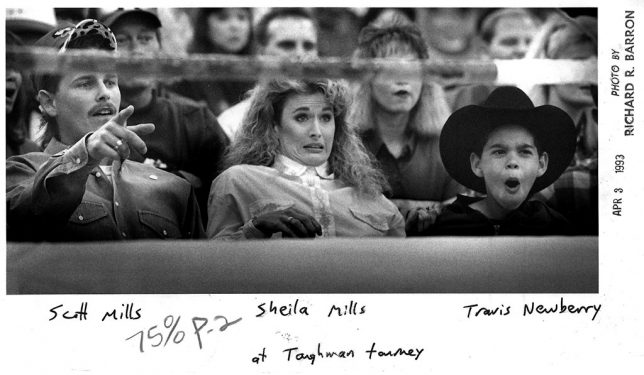
Anyone who used one of these, and most of us did, remembers one thing about these prints more than anything else: the smell. The stabilizer used a potent mixture of acetic and boric acids to rapidly neutralize the developer and make the image temporarily light safe. It was a vinegar-like smell, only somehow sharper.
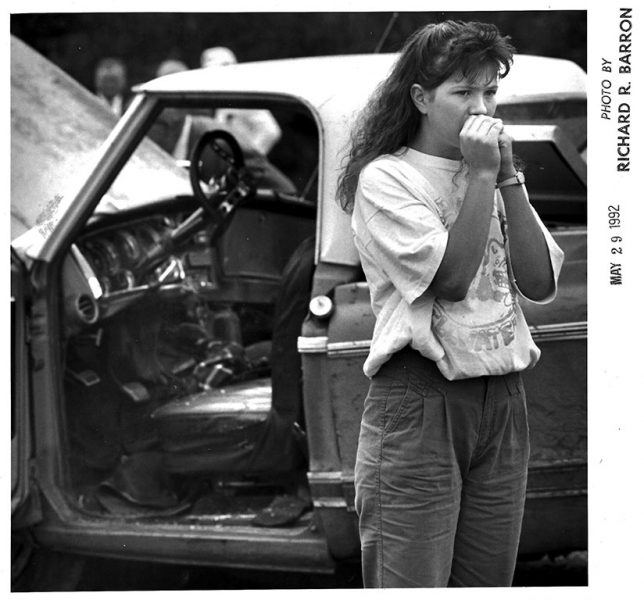

Cleaning this processor involved taking it apart and scrubbing the rollers, then adding fresh chemicals using bottles that sat upside down on top of the machine so they could refill the trays using valves that screwed onto the bottles. It needed to be cleaned a couple of times a week, but I can tell from my prints when I waited five or six days because there are streaks on the prints.

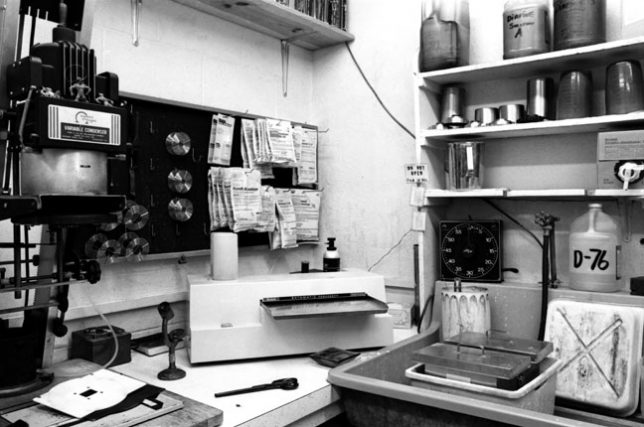
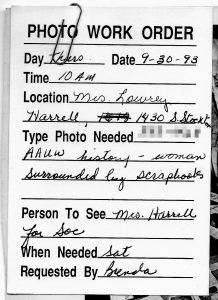
My analog craft tapered off somewhat after September 1998, when my company bought a Nikon LS-2000 film scanner and an Apple PowerMac G3 computer to run it. I still processed film, but instead of printing it with an enlarger, I scanned the negatives and saved the files on a server for the newsroom to use.
I cite this transition as part of the impetus for one of my earliest photographic trips to the desert, Villanueva.
Reviewing these images started late last year when my coworker LeaAnn Wells was looking for an old newspaper in the storage area called the “morgue.” It’s a smallish room, and had filled with so much clutter that when LeaAnn tried to stand on something to reach papers on a high shelf, she almost came crashing down. She and I vowed to clean up the place, which was filled with, for example, 300 copies of the 2006 football preview section, where we really only need about five copies.
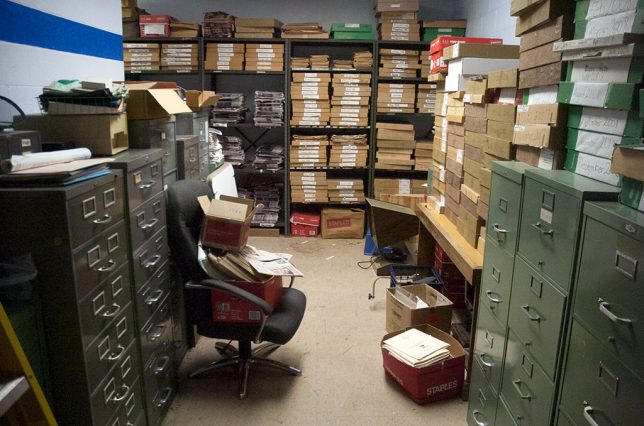
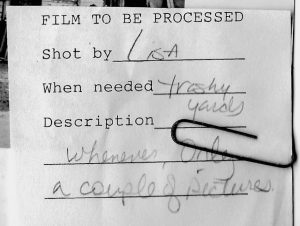
Knowing that if everyone is in charge, no one is in charge, I took point in this cleanup effort, and have thrown away maybe a ton of worthless duplicates of newspapers, dust mites, rat turds, and even 50 bags of cooking show coupons and free chicken broth.
In the midst of all this, I found, near the bottom of the piles, a huge box full of my own Ektamatic prints from many years ago, and decided to try to get them in some order and preserve them.
[stextbox id=”download” caption=”Making Me Look Bad…”]One thing I despised was being caught between management urging me to use less material and editorial demanding I use more. Publishers and accountants would tell me something like, “We used too much film and paper last month. Try to use less.” Which I would. Then editors would say something like, “Why can’t I get more shots from this?” or “Why are you printing this so small?”[/stextbox]

One thing I was able to affirm by looking through these thousands of images is that I was good. It’s easy for me to forget that I have done solid work for my entire career, particularly during periods when I wasn’t appreciated by management. But I look through these slicks and see that I shot well year after year after year.

Just because some loudmouth Millennial rolls his eyes and dismissively says, “That’s the oldest trick in the book!” (with an implied “old man!”), doesn’t mean it’s not a good trick. I used one of the oldest tricks in my lexicon recently in class: the hair shake. This works well with people who have long hair that is looking too stiff. Have the subject/model throw their head forward and shake their hair, then quickly sit up, letting their hair fly back. Nine times out of ten it will result in their hair looking wild, free, fun, beautiful. Don’t let them touch it – it will feel strange to your model because they never comb or brush it that way, but it will look amazing.
